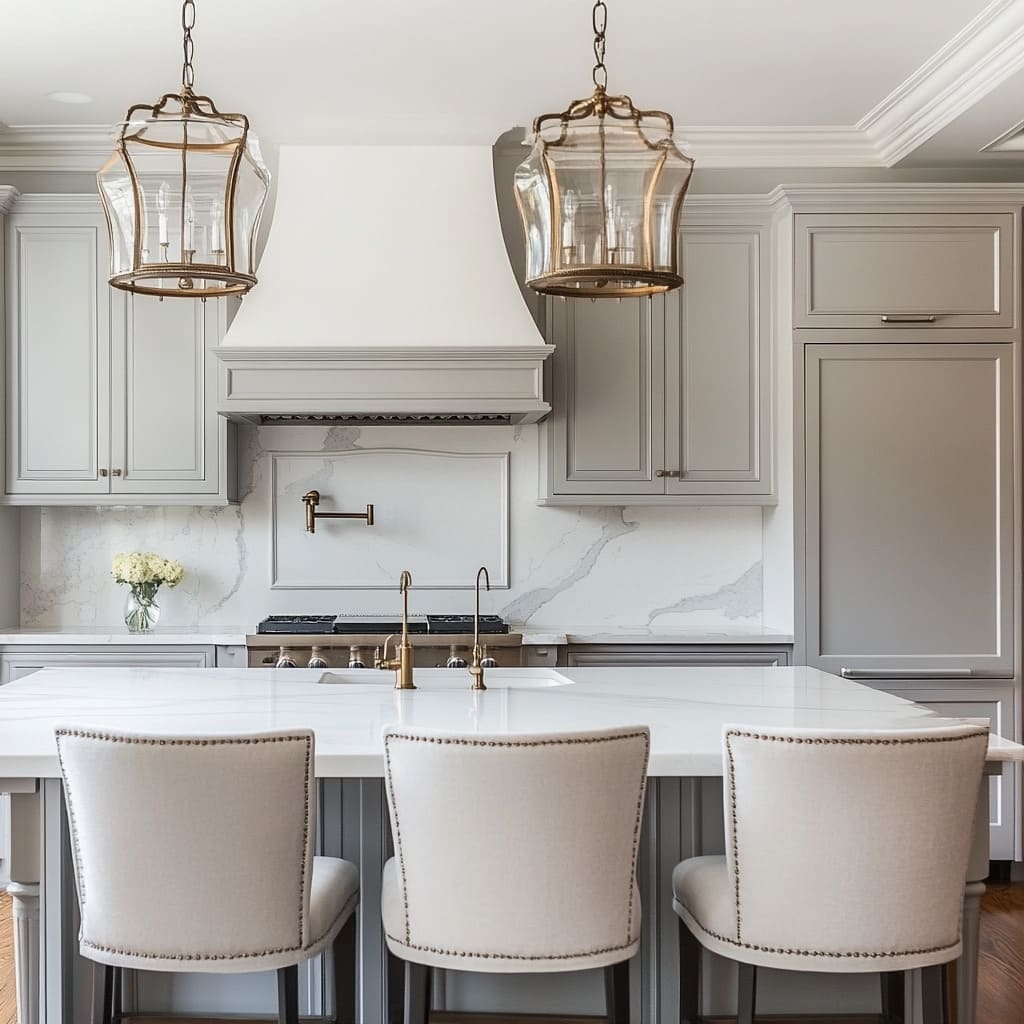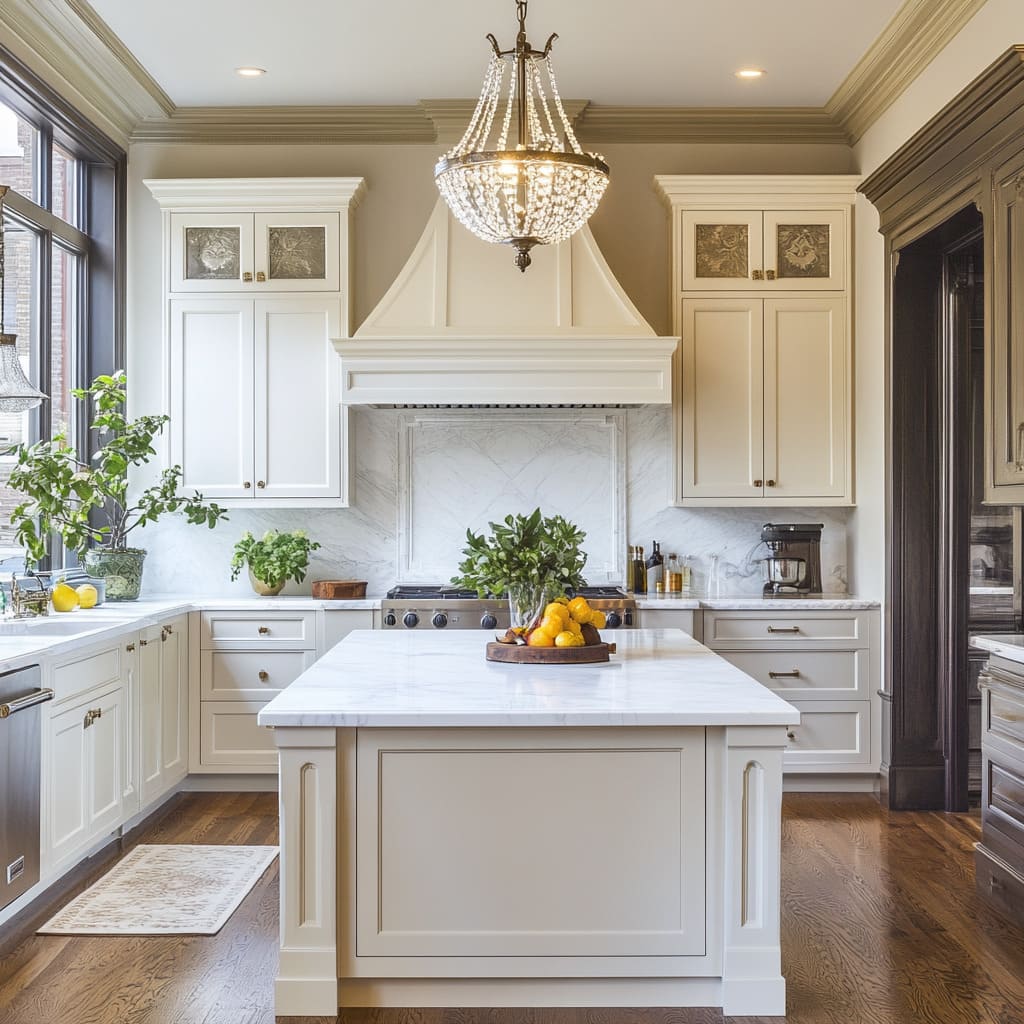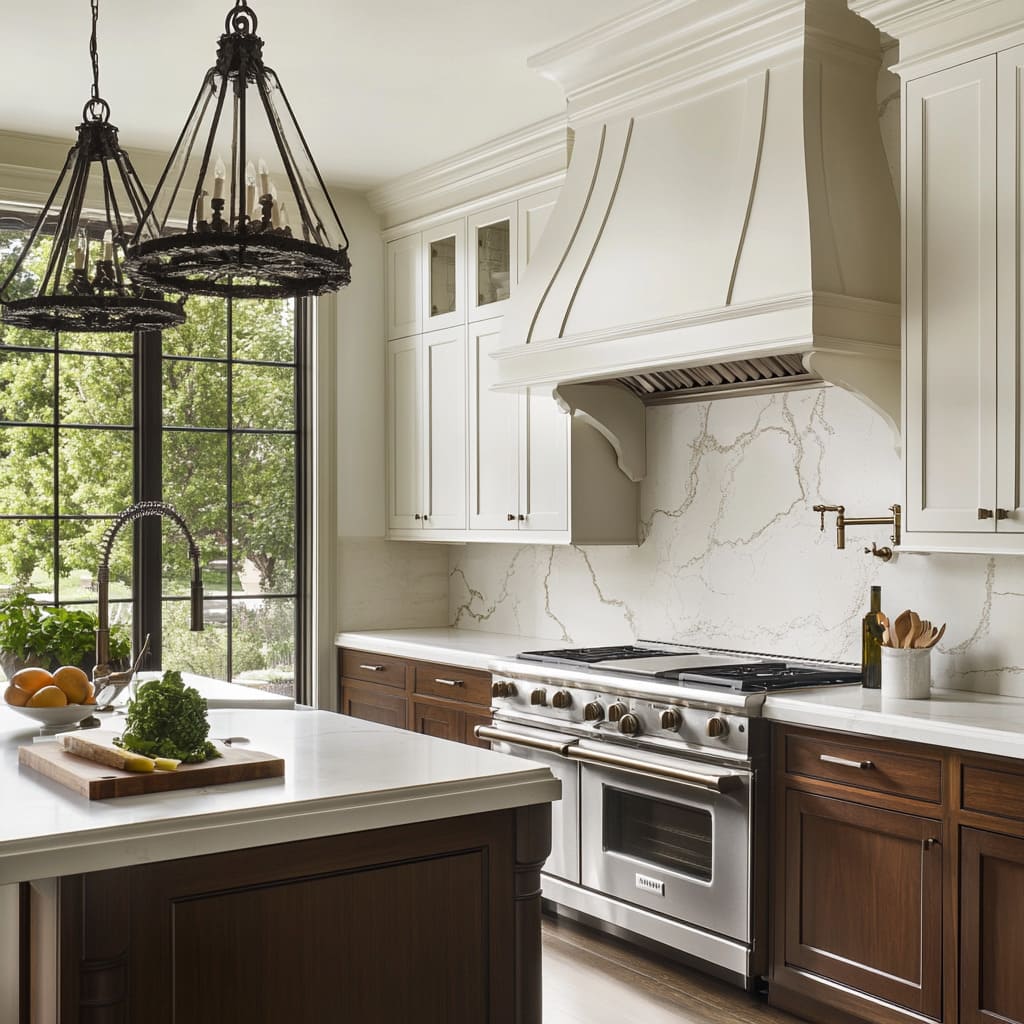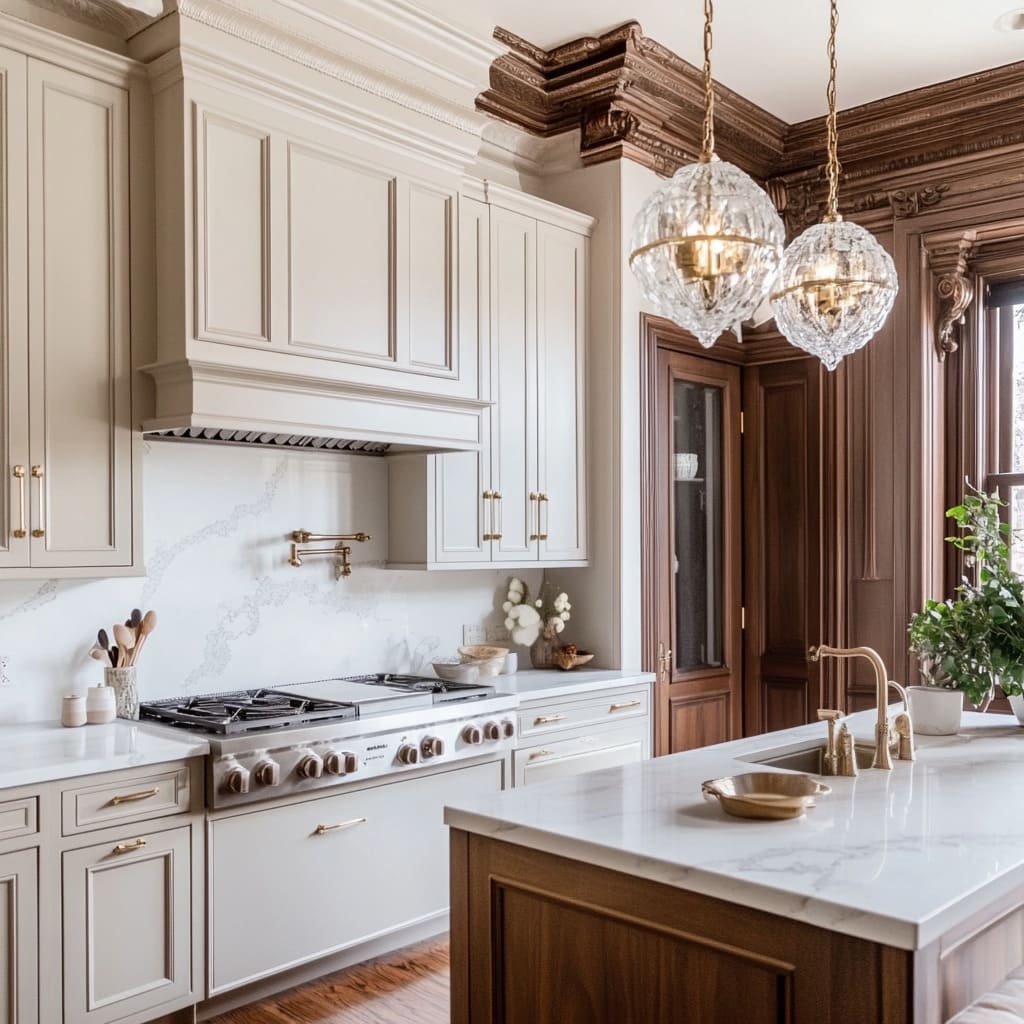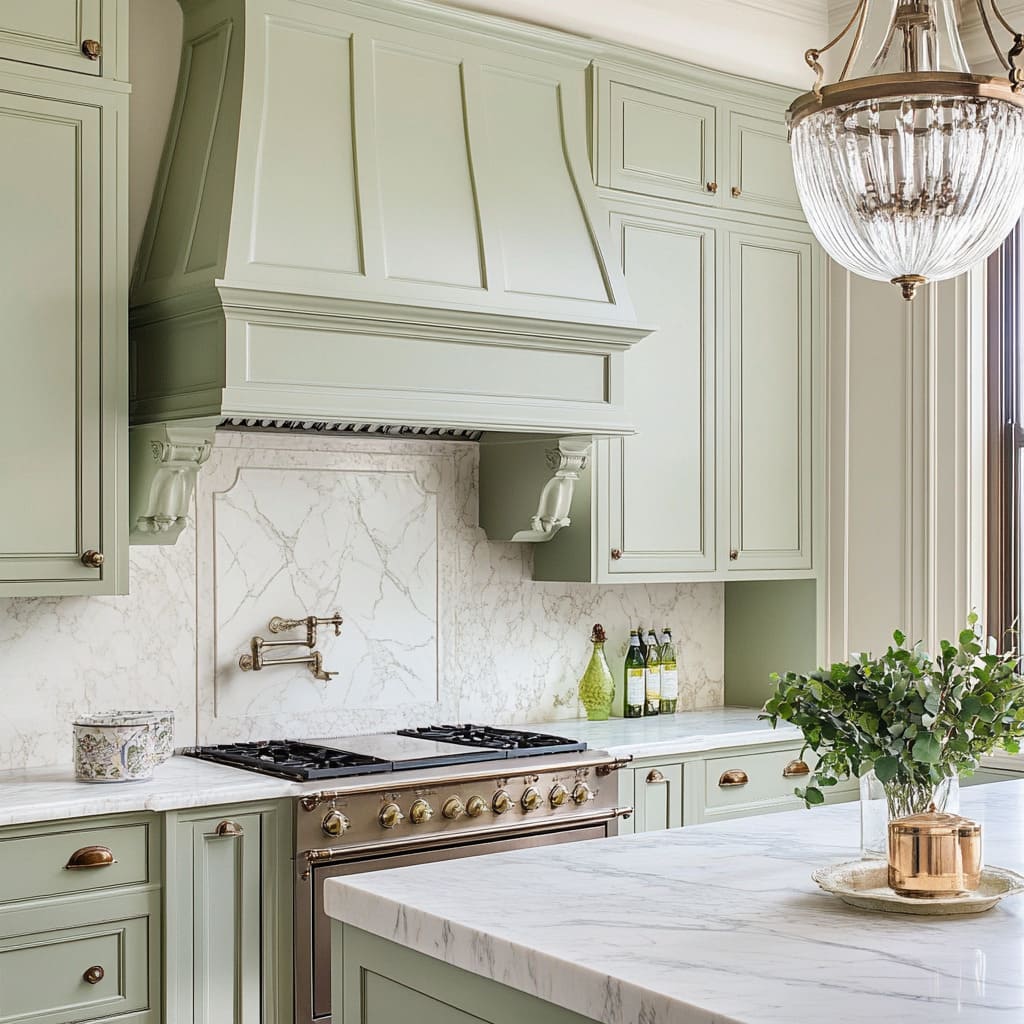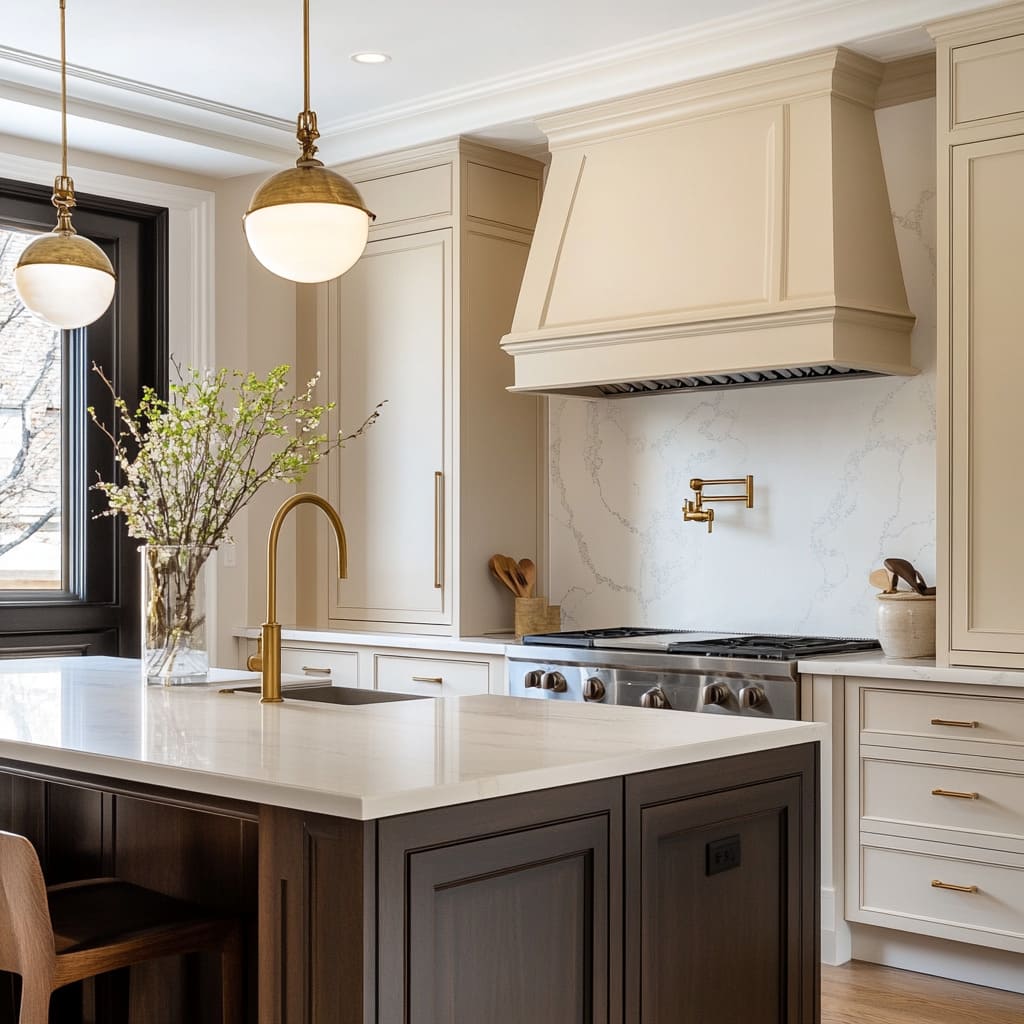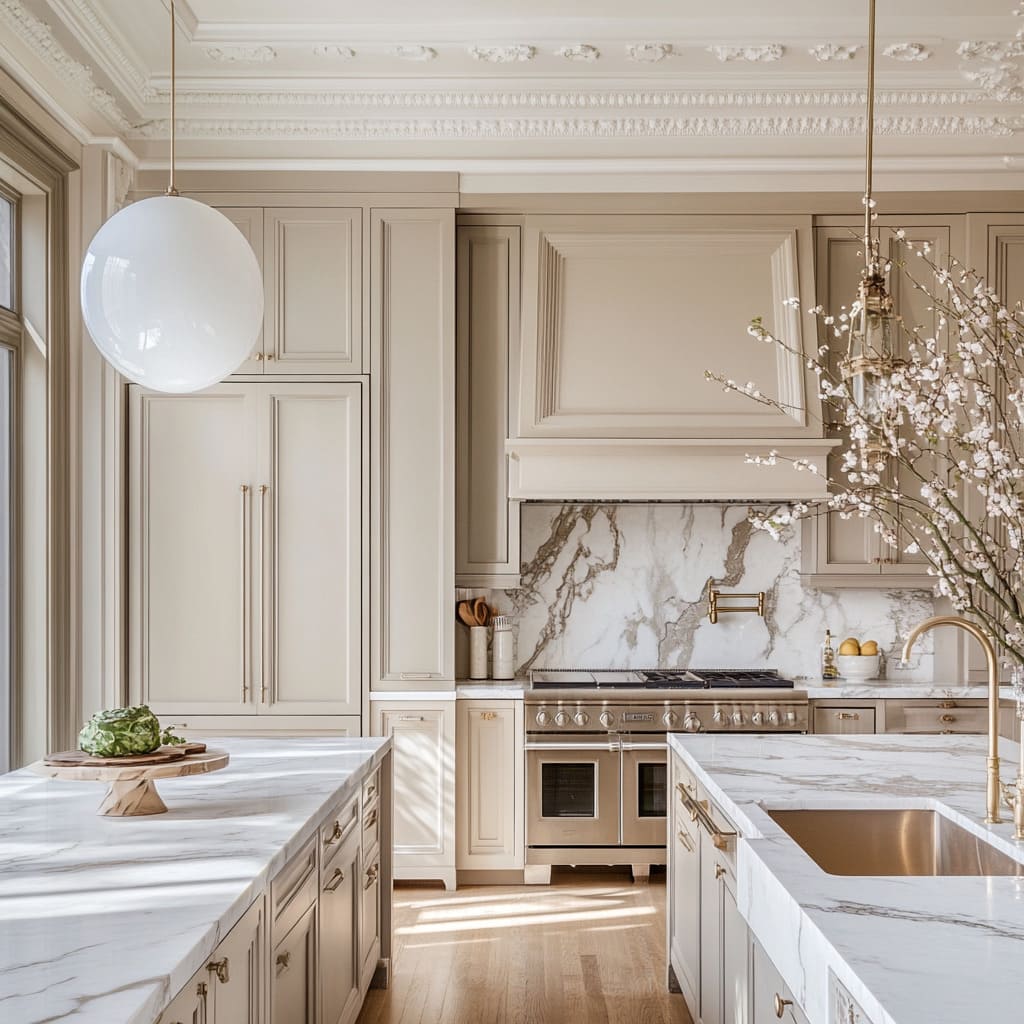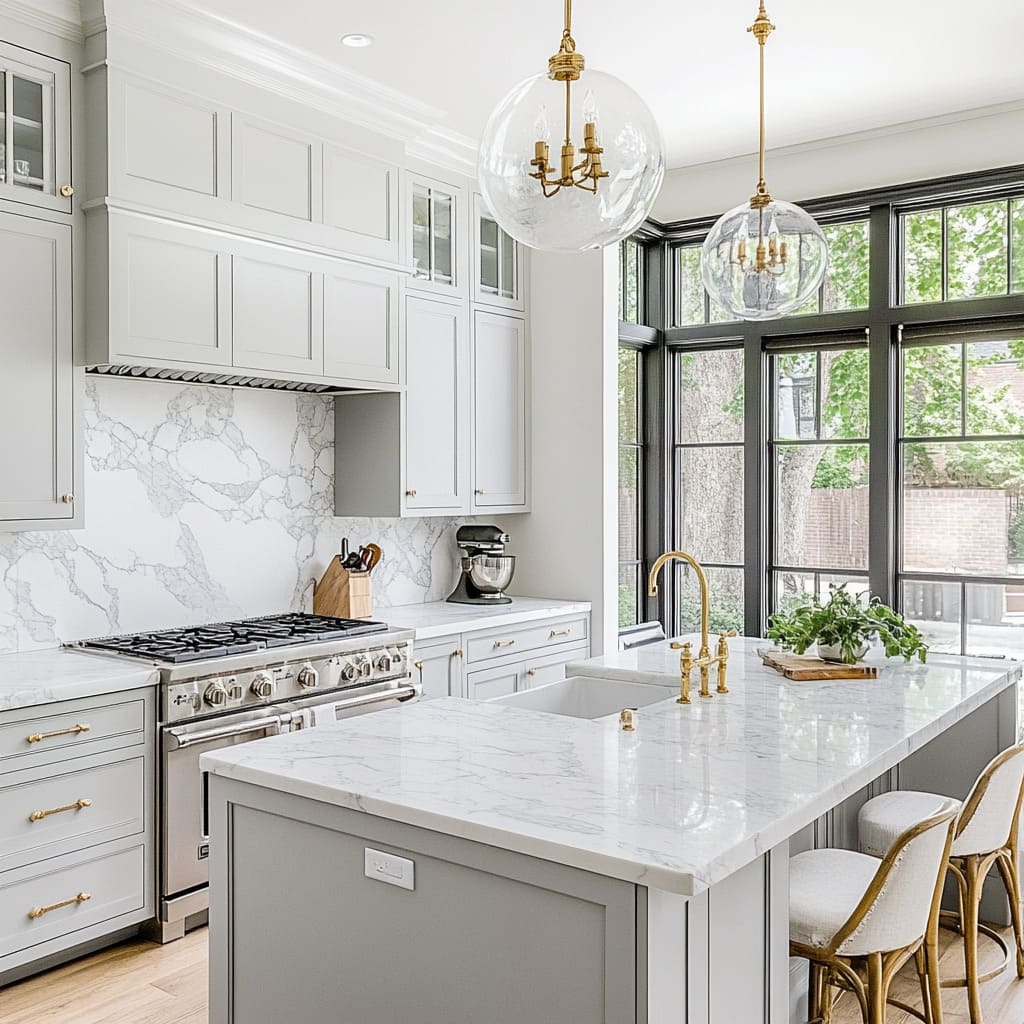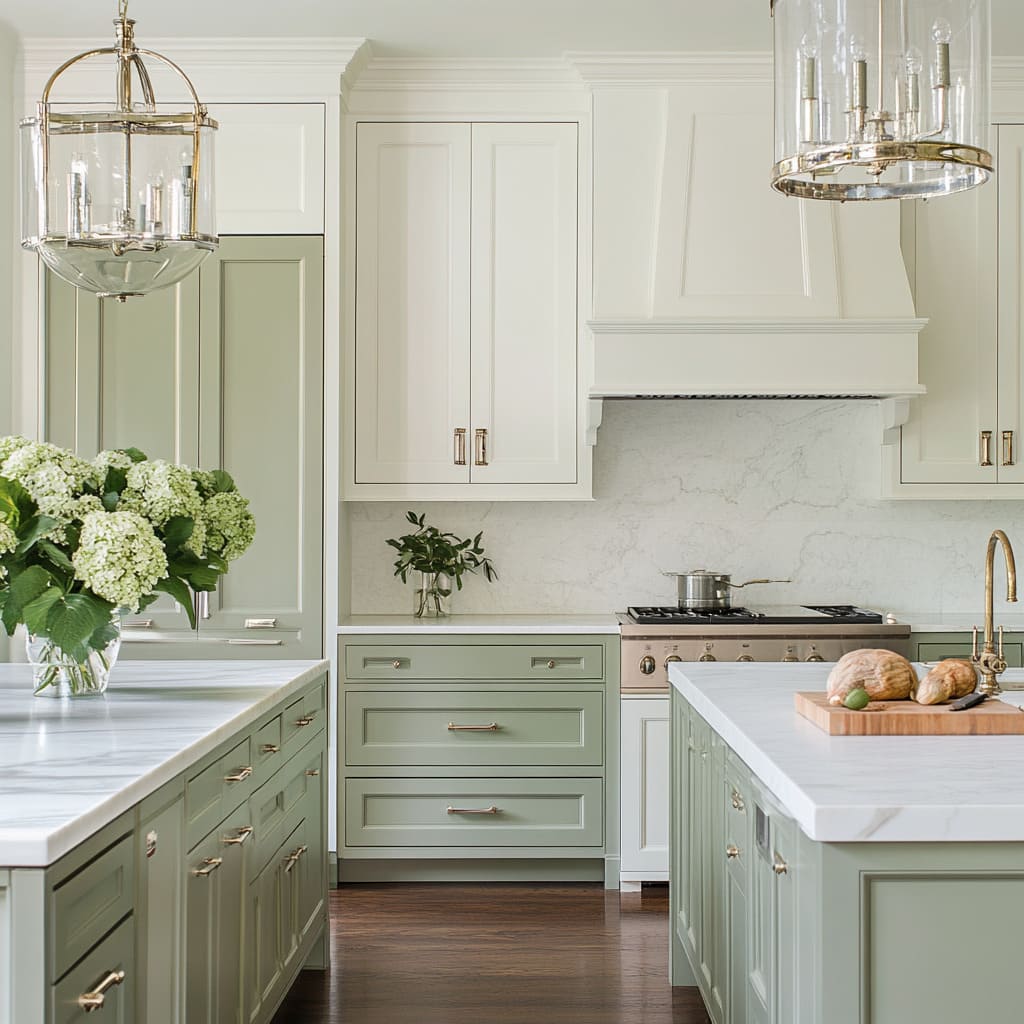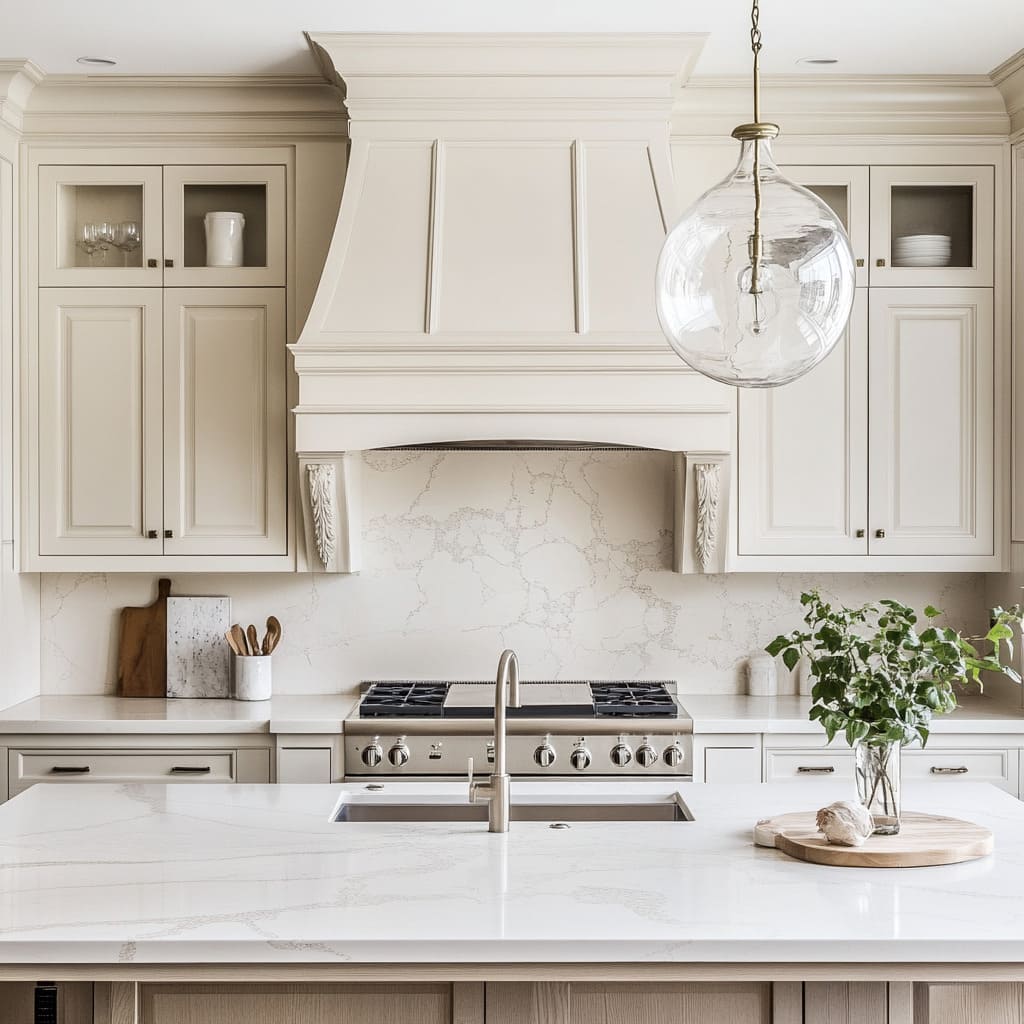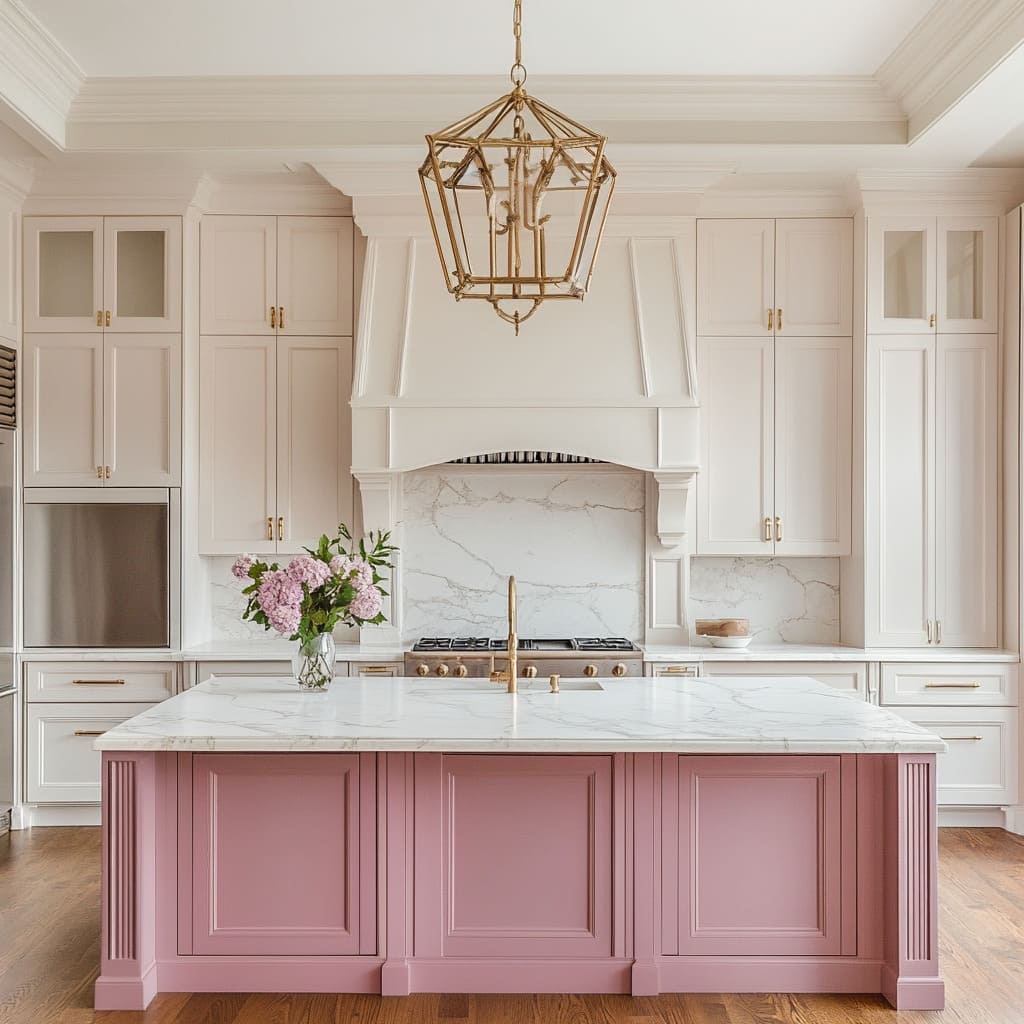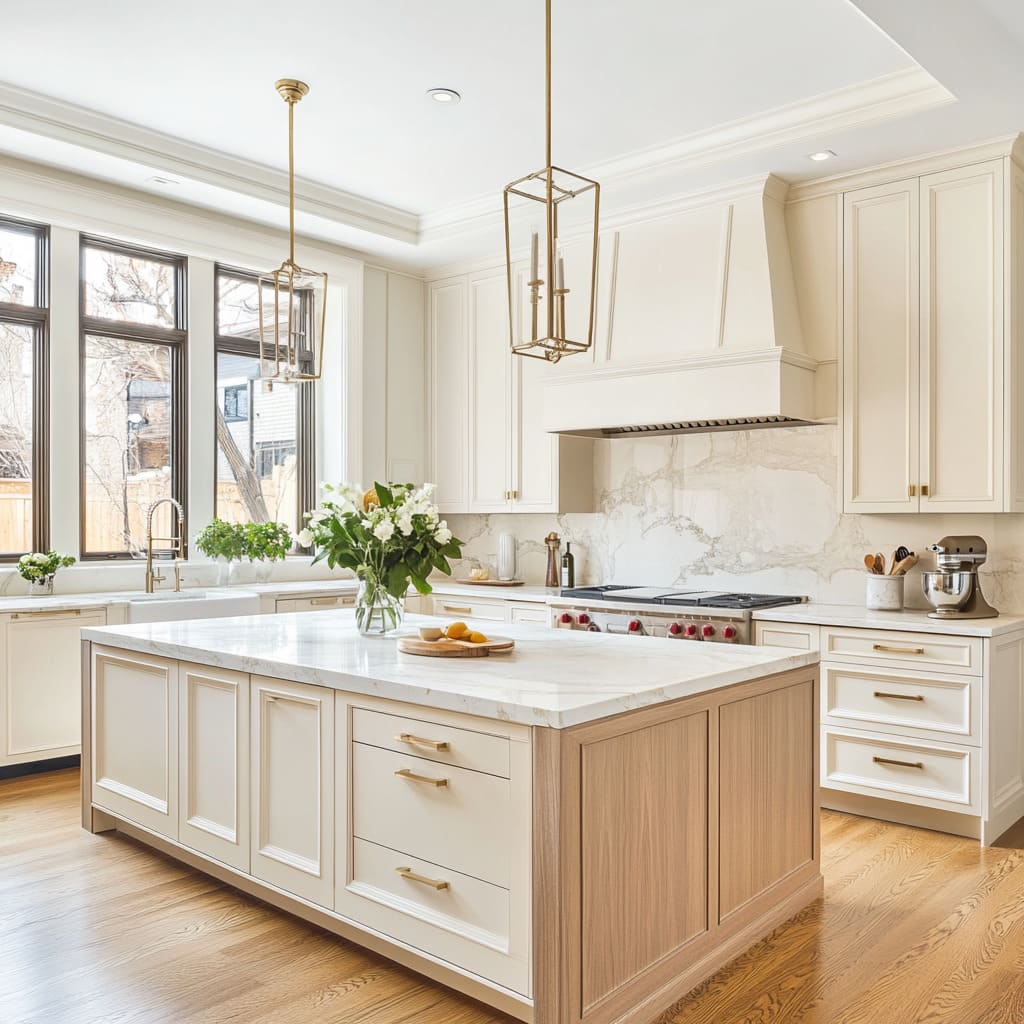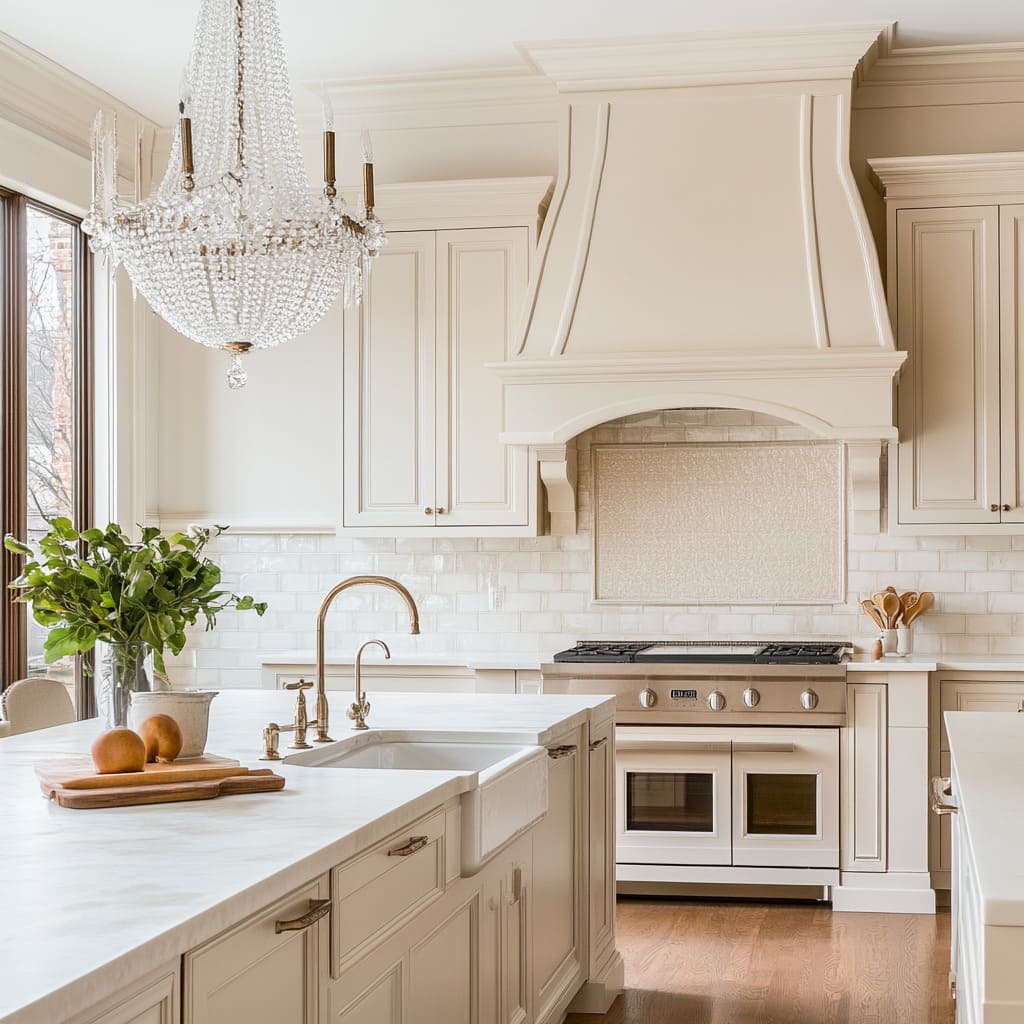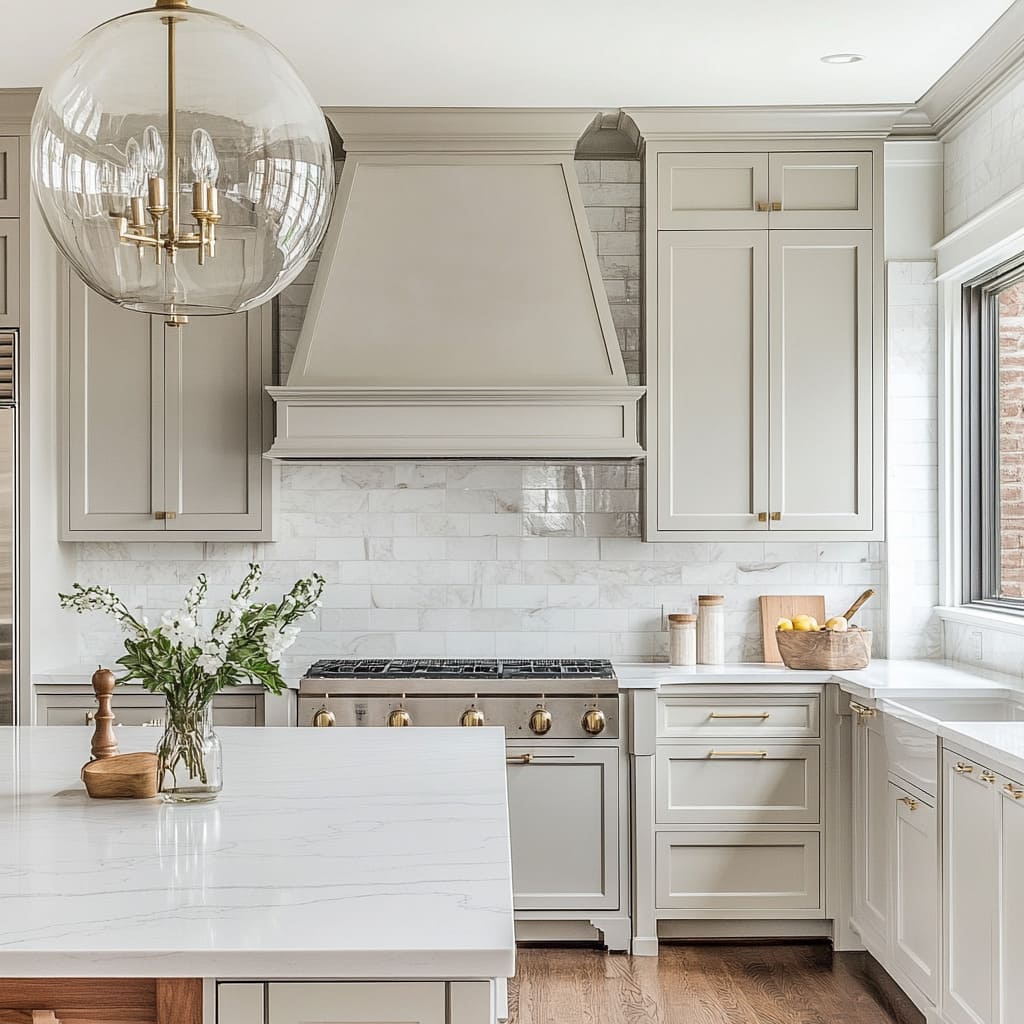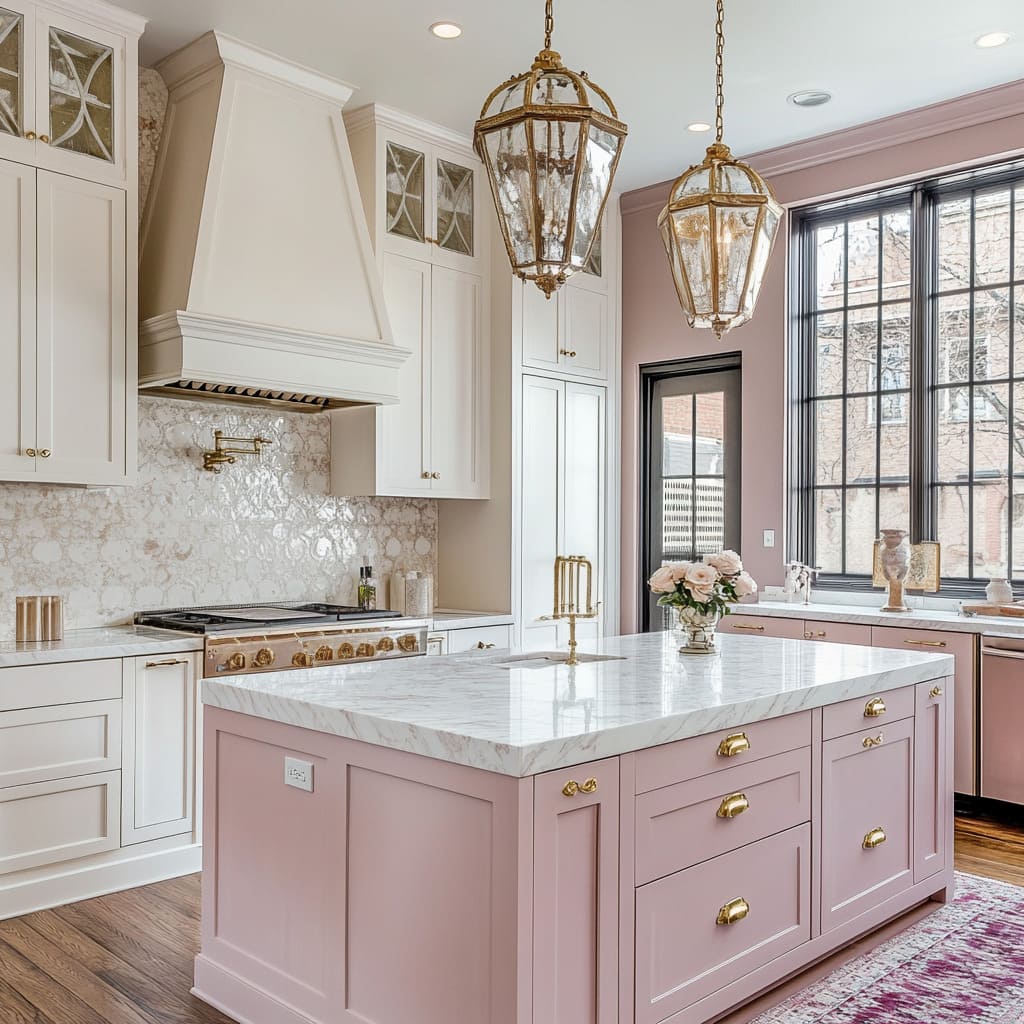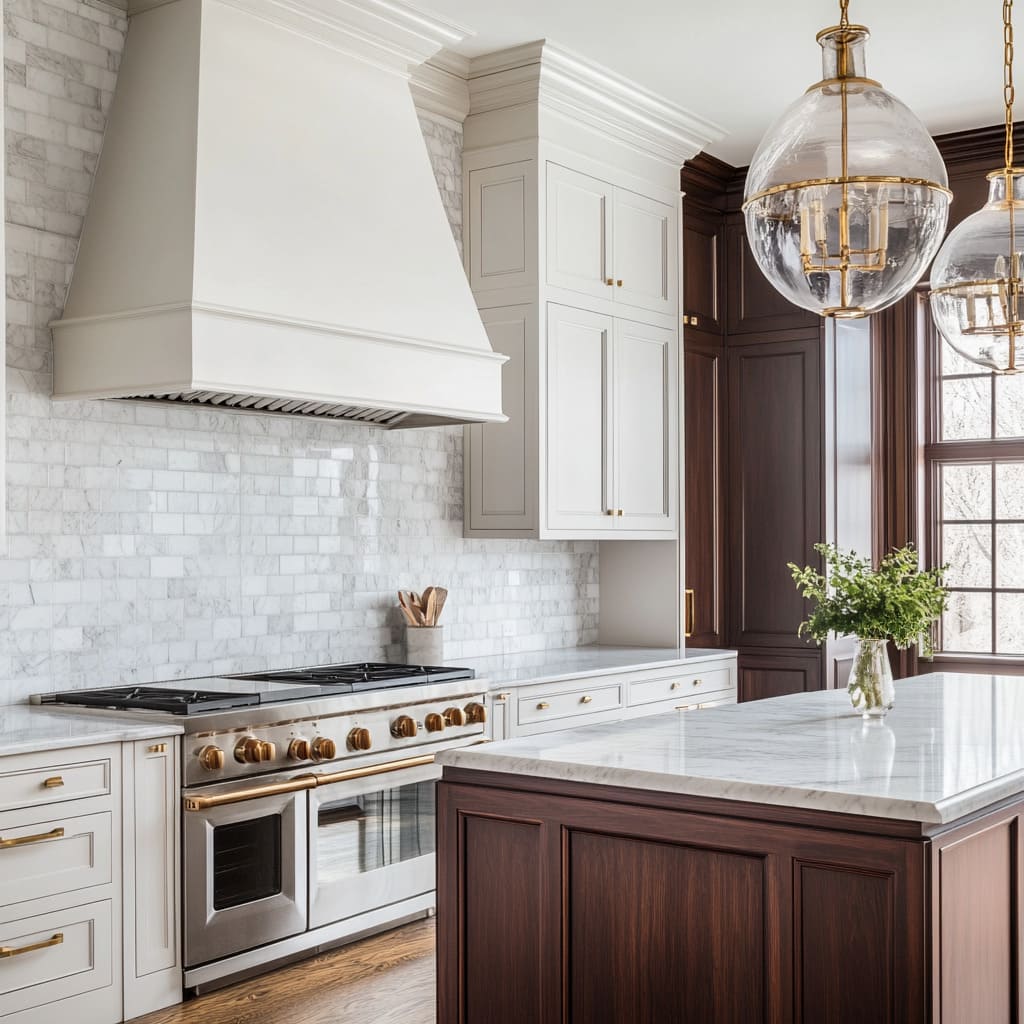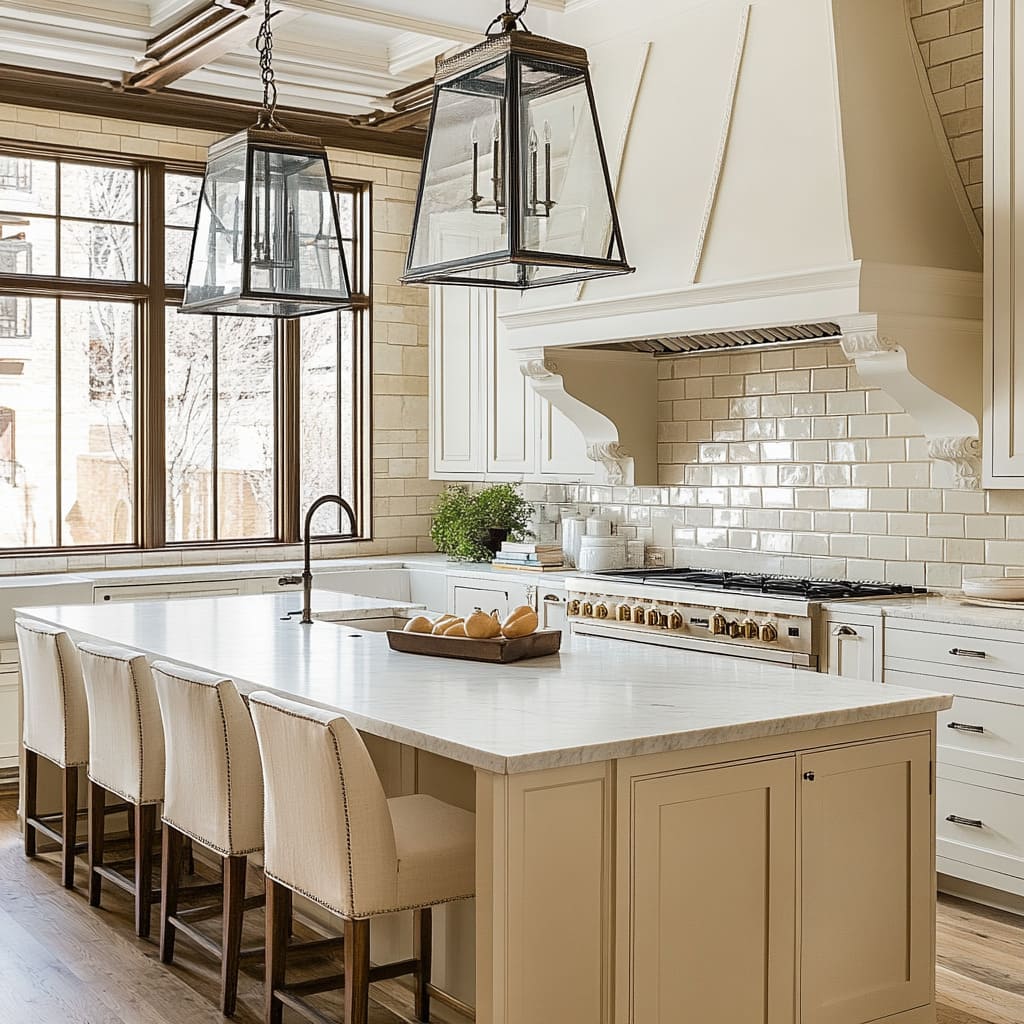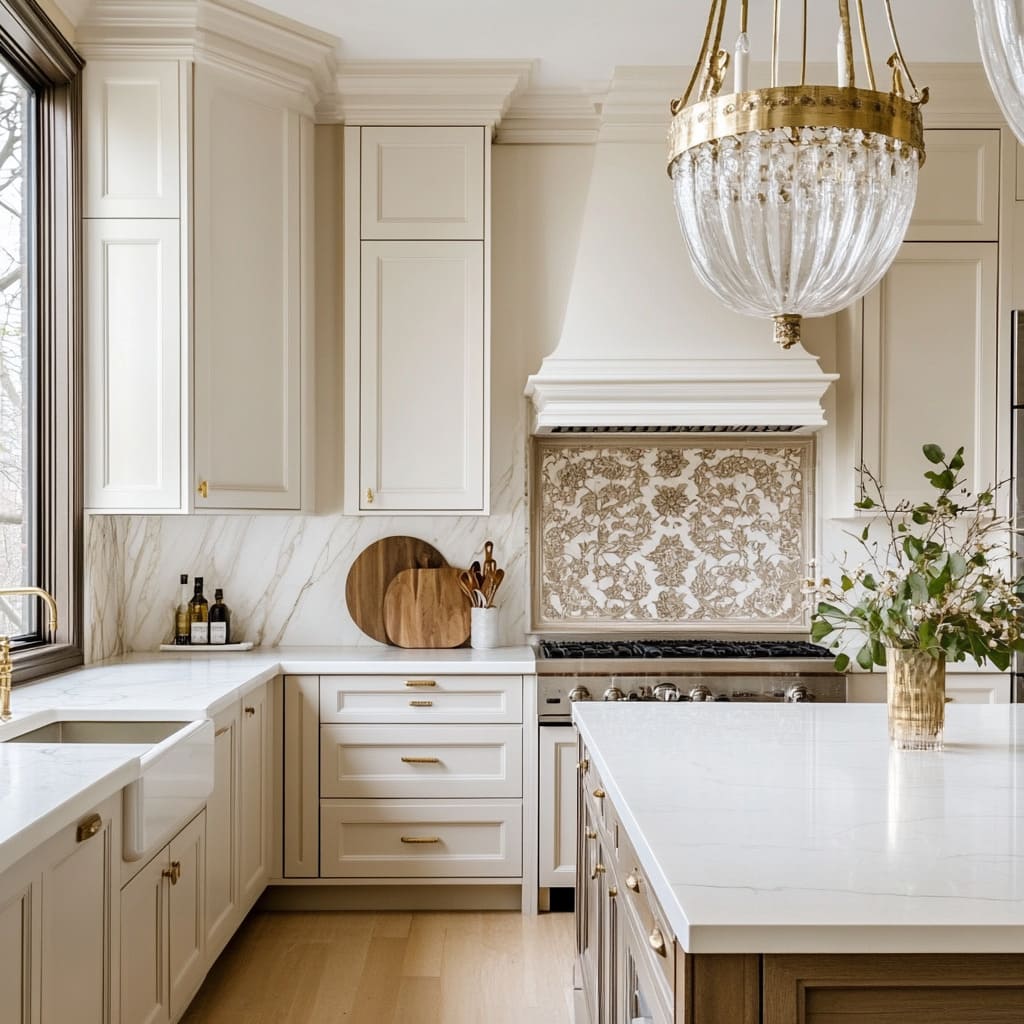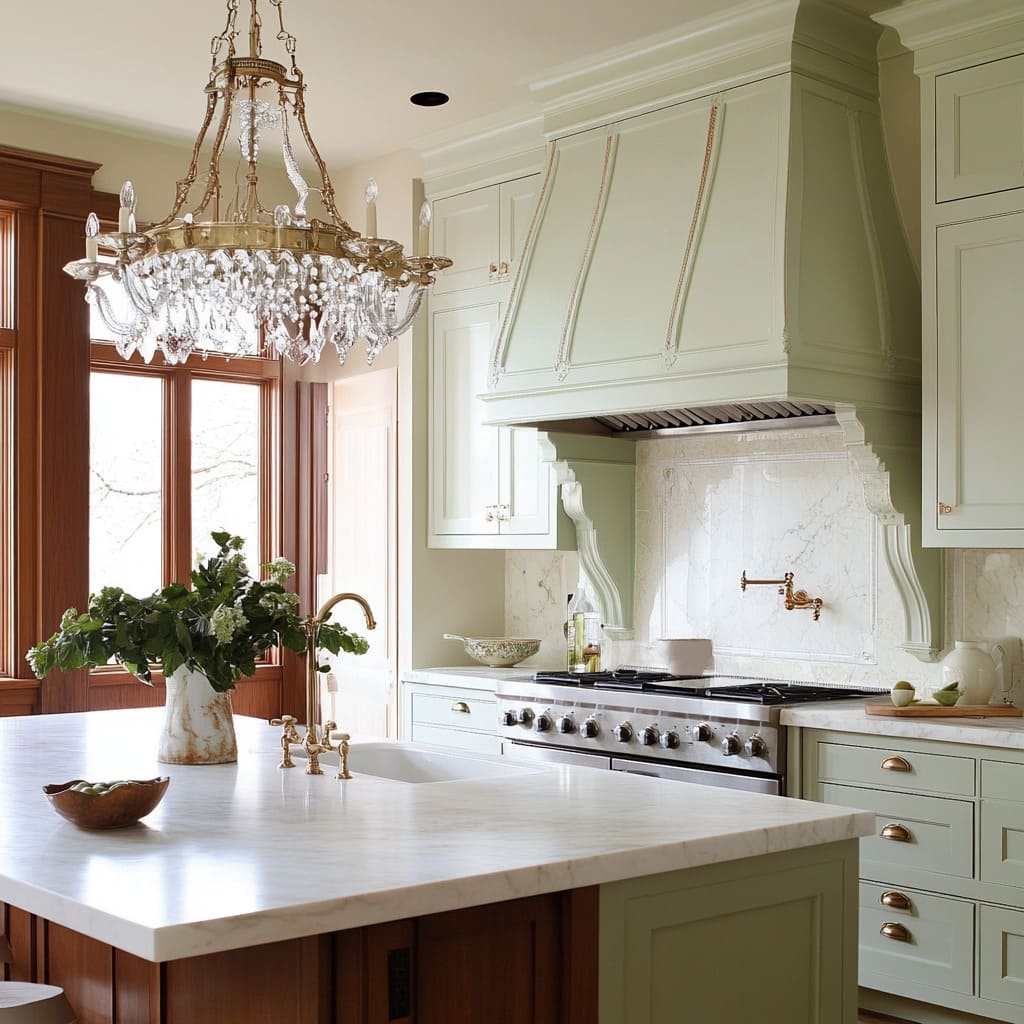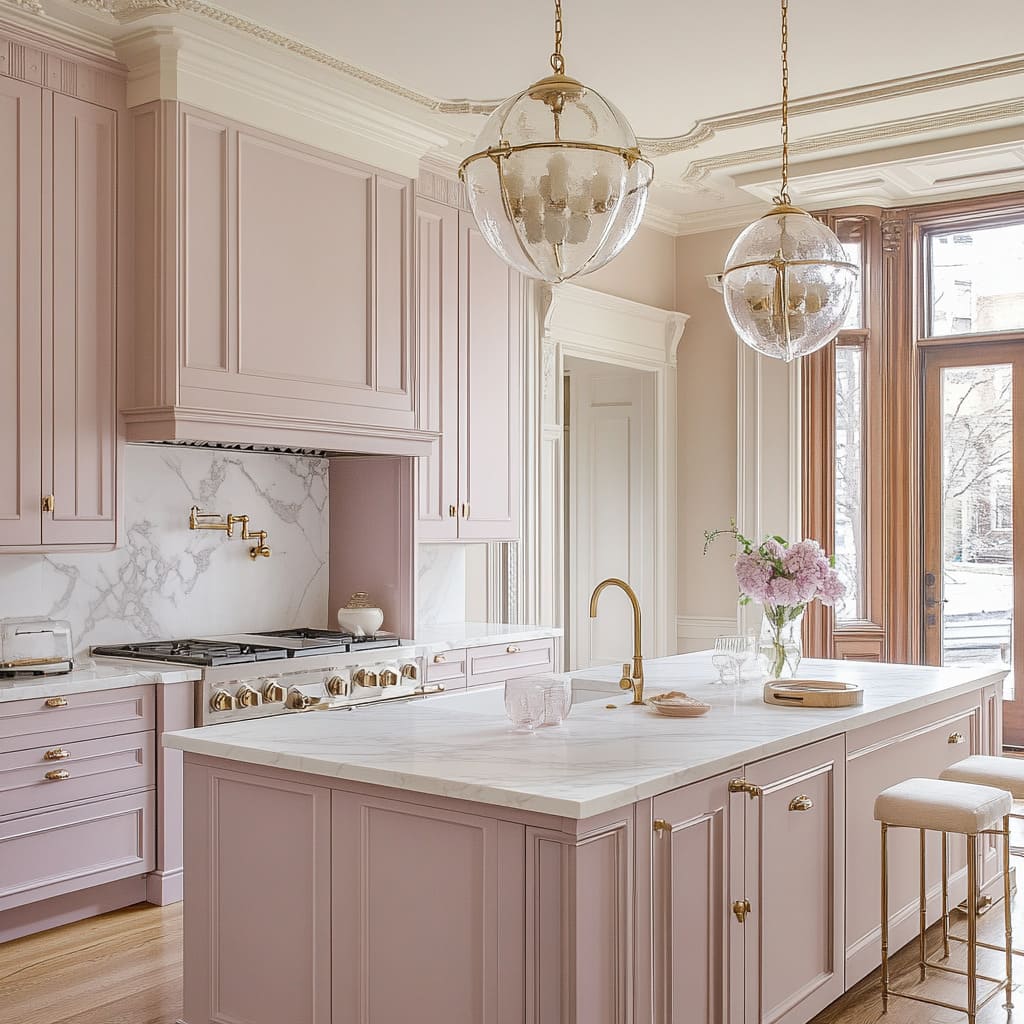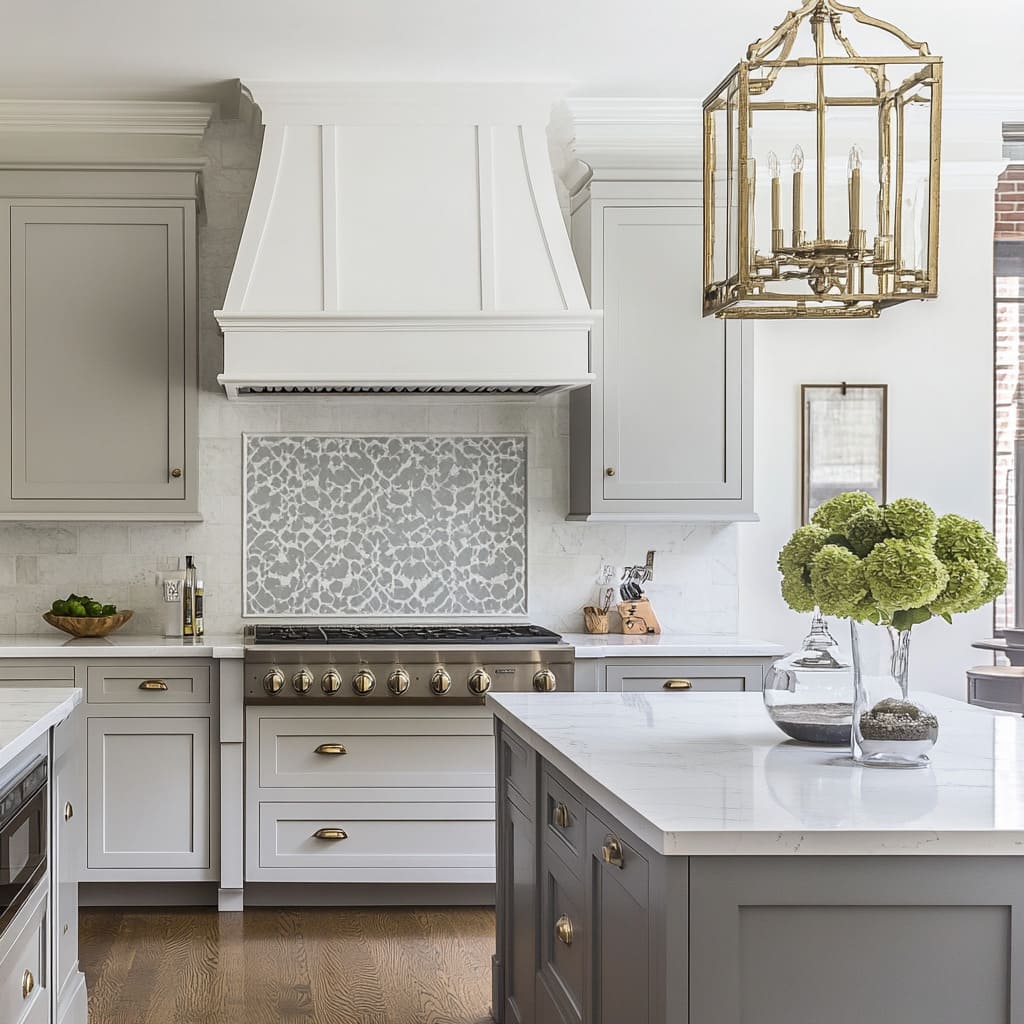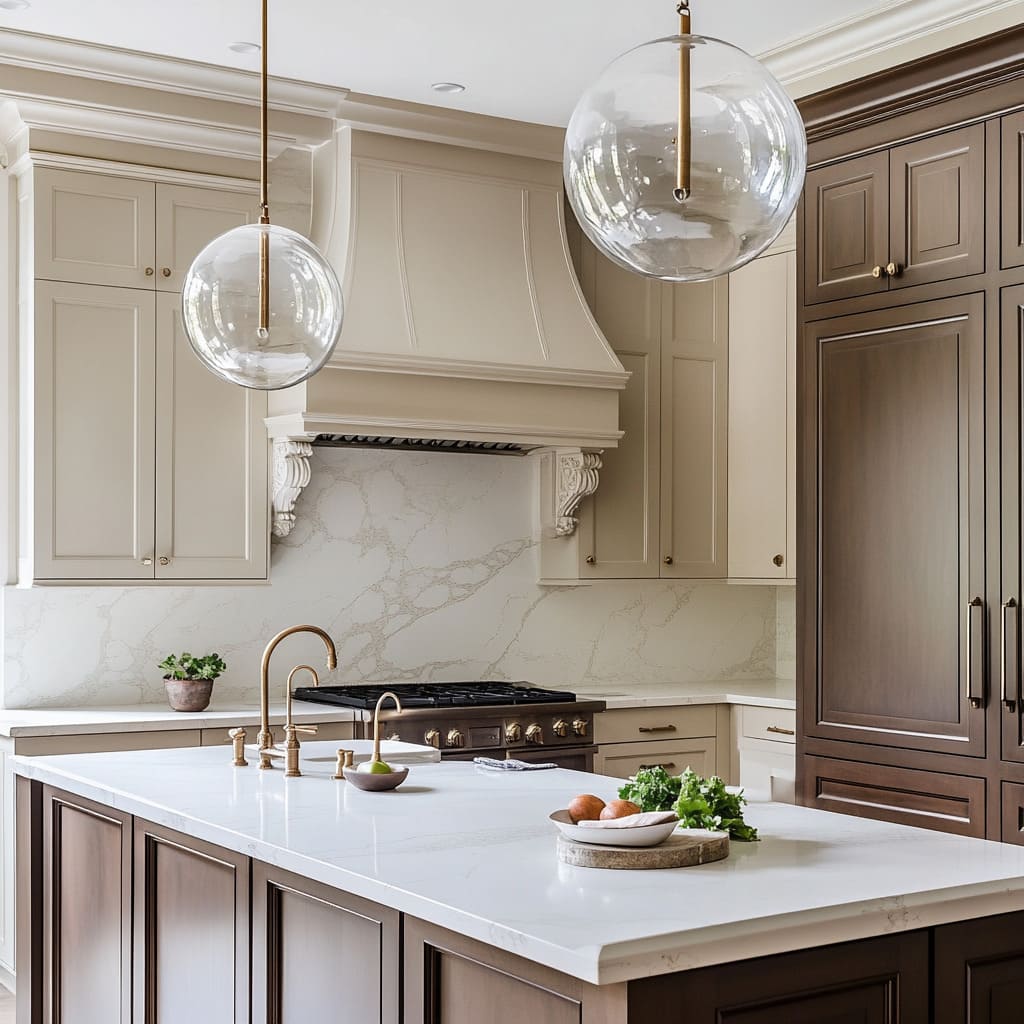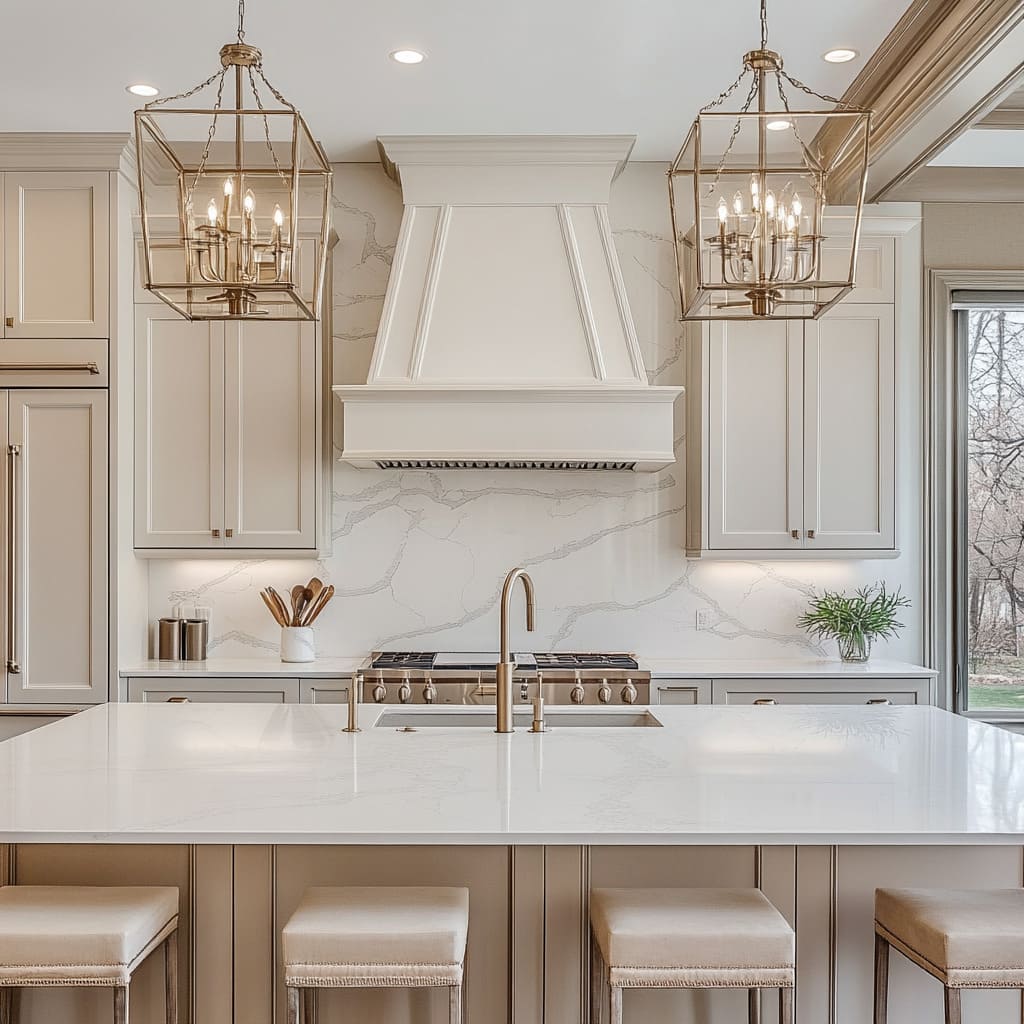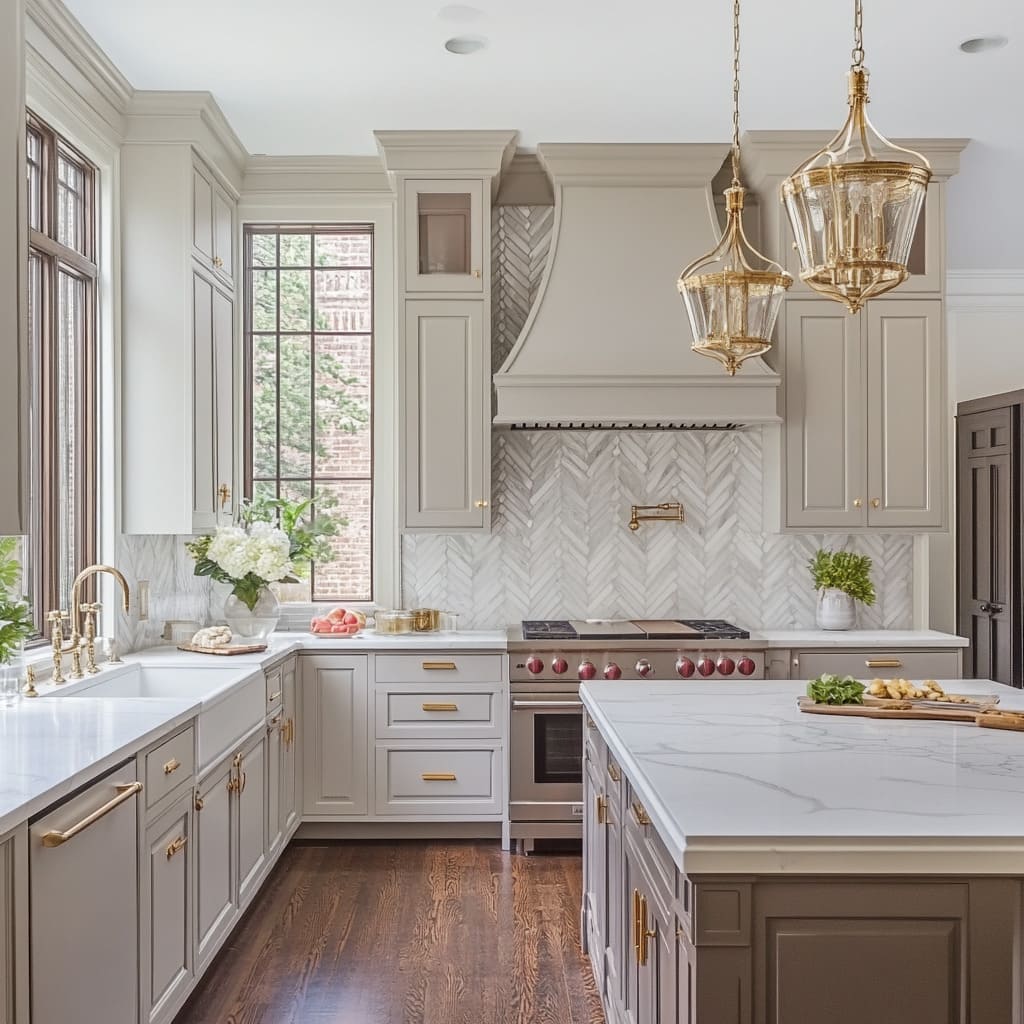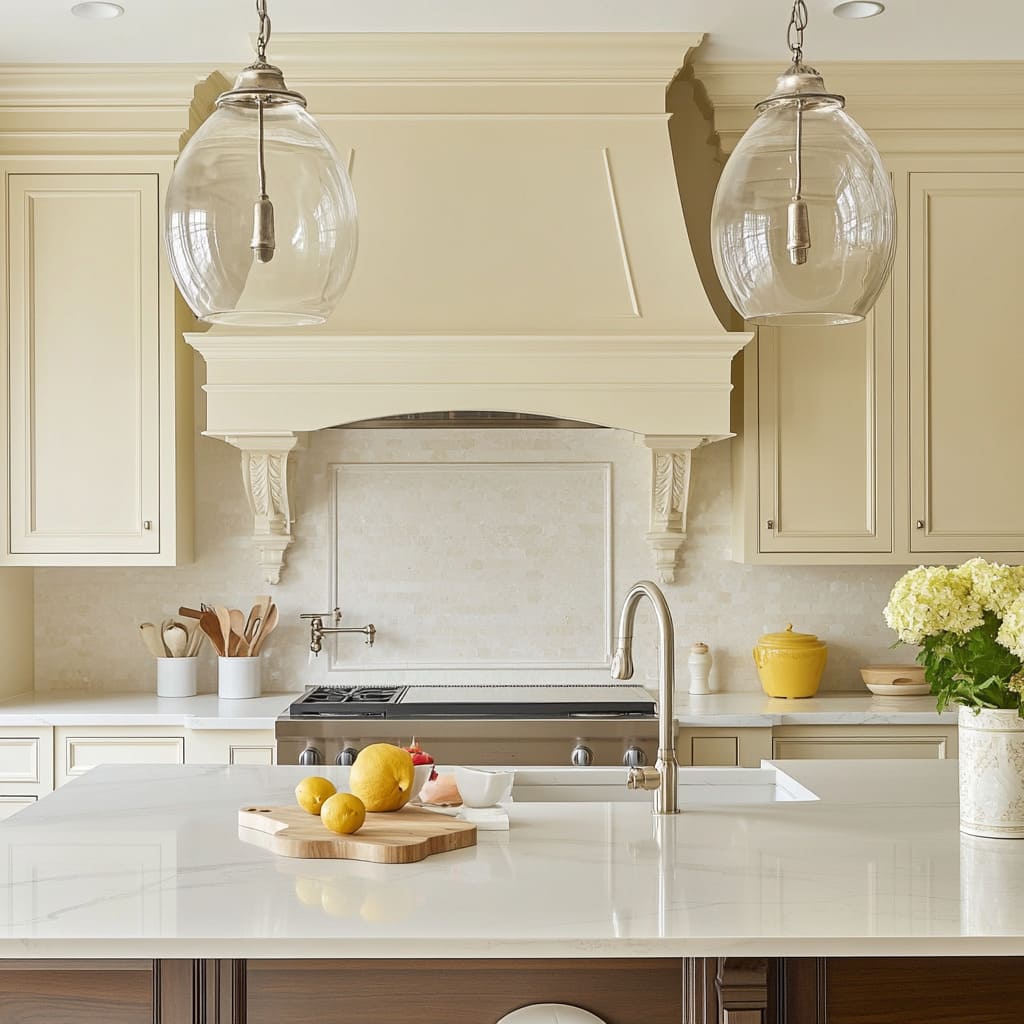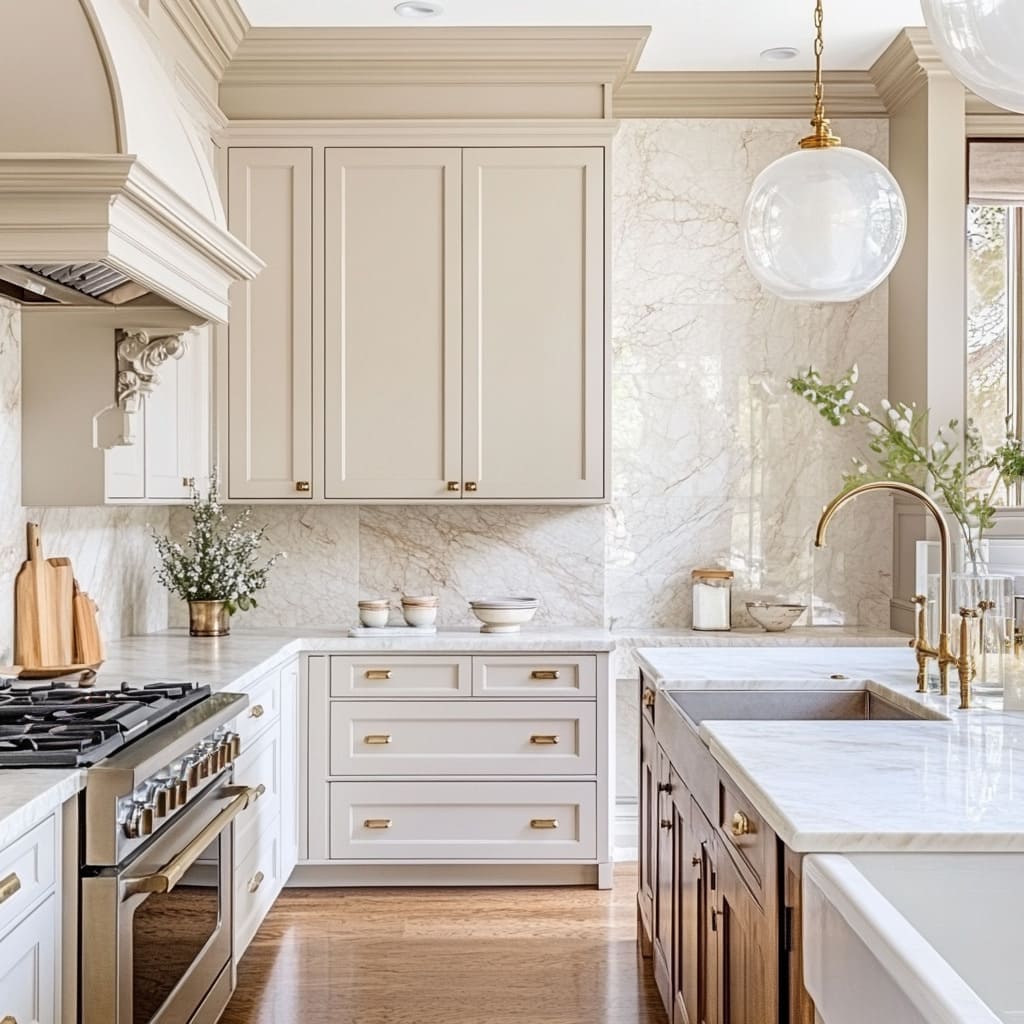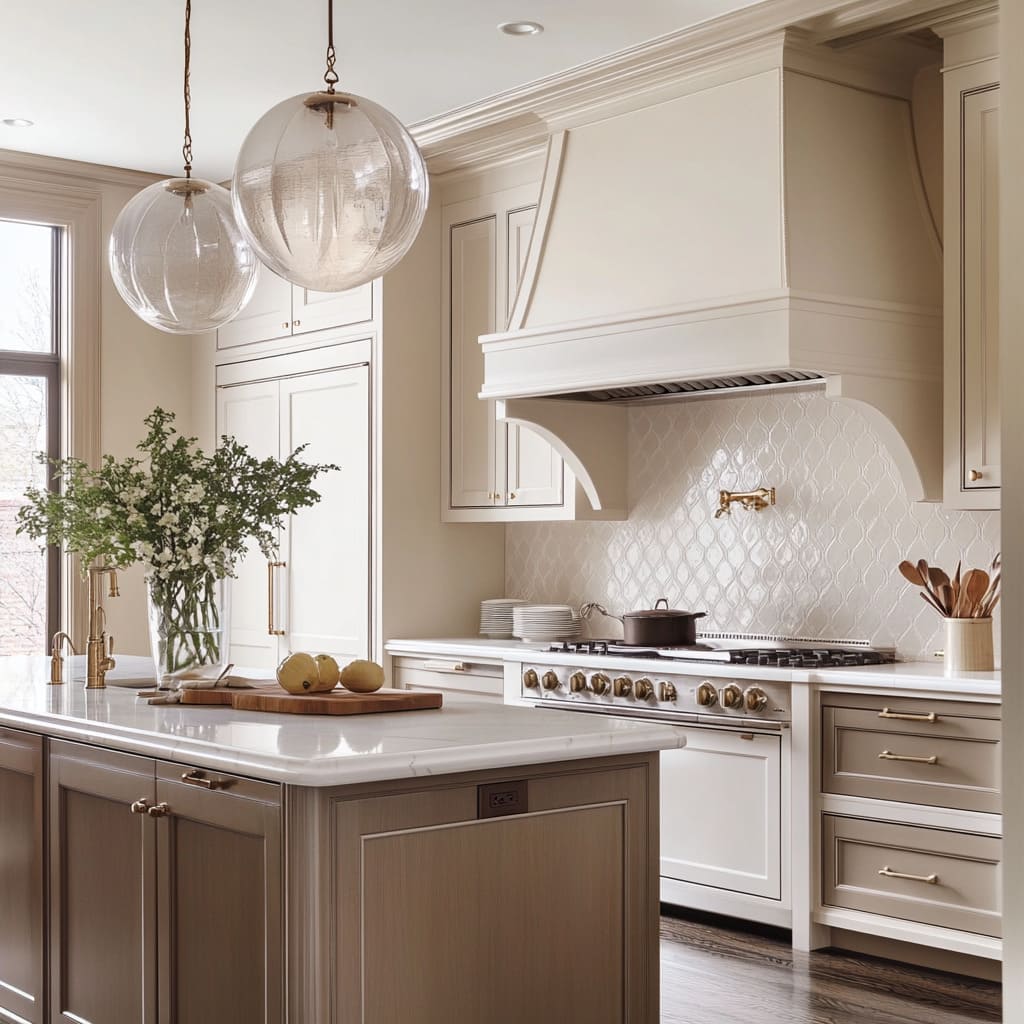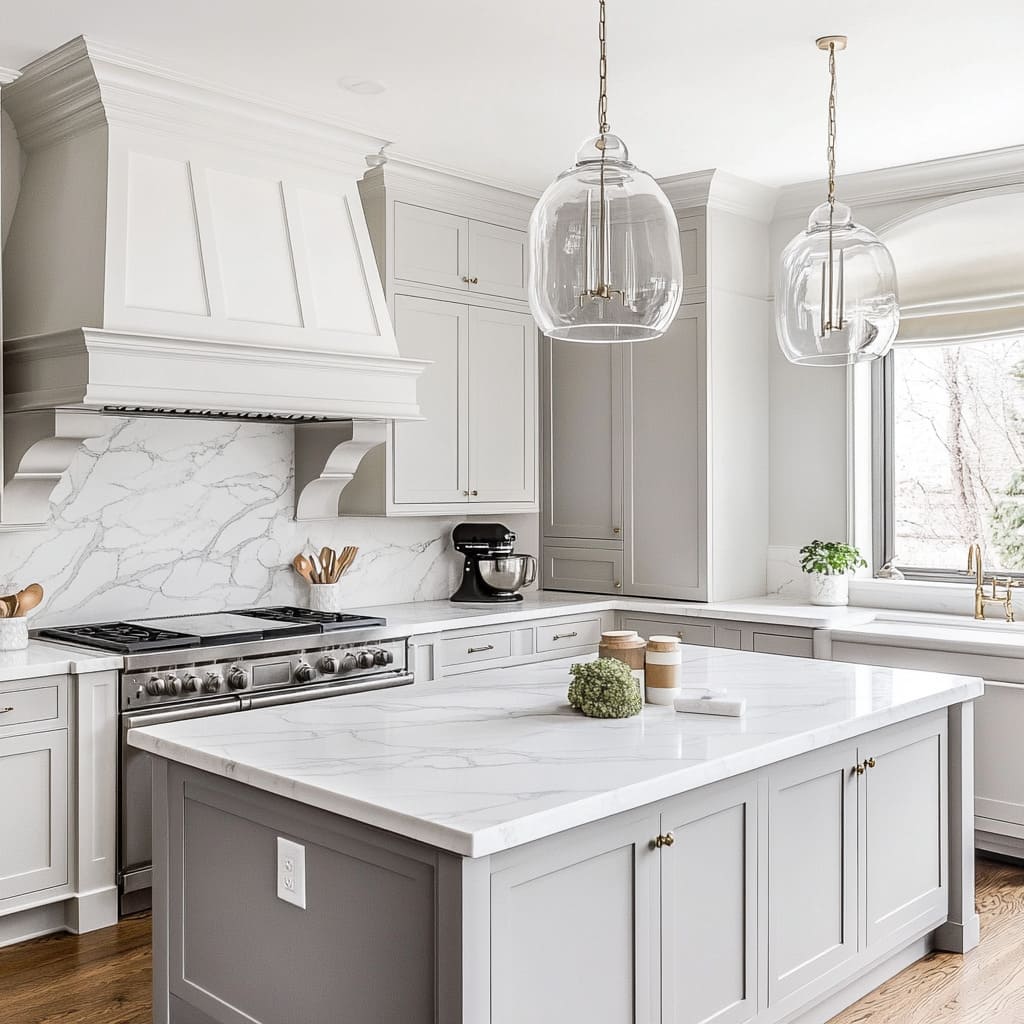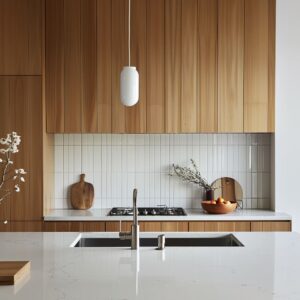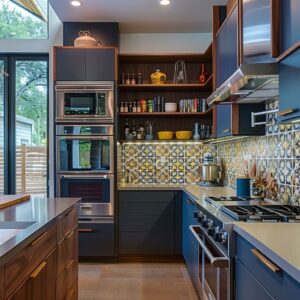In kitchen design, achieving a balance between classic elegance and modern practicality is a sought-after goal. Combining these two styles results in a space that feels both timeless and contemporary, appealing to those who appreciate traditional beauty yet desire the conveniences of modern living.
A kitchen that incorporates elements of both classic and modern design offers a welcoming environment that is as functional as it is visually pleasing. By blending timeless aesthetics with contemporary functionality, homeowners can create a harmonious space that caters to both traditional tastes and modern lifestyles
This article explores how to achieve a perfectly balanced kitchen design that merges classic charm with modern touches. We will look into key elements such as cabinetry, color palettes, lighting, materials, and decorative features that contribute to this unique style.
By understanding these elements, you can craft a kitchen that reflects both your appreciation for tradition and your desire for a modern, efficient space
The Foundation: Color Palette and Materials
Neutral and Soft Color Schemes
Choosing the right color palette is the first step in creating a balanced kitchen that feels both classic and contemporary. Neutral and soft color schemes, such as creams, beiges, and sage greens, are fundamental to this style.
These colors not only evoke a sense of calm but also serve as a versatile backdrop that complements various design elements. For those seeking modern classic kitchen design ideas, these hues provide the perfect foundation.
A soft, neutral palette creates an inviting atmosphere, allowing for the seamless integration of both traditional and modern features
The use of neutral colors like cream and beige adds warmth and a sense of openness to the kitchen, making it feel more spacious and welcoming. Meanwhile, shades like sage green introduce a touch of color that remains understated, adding depth without overpowering the room.
This subtle approach ensures that the kitchen retains its timeless appeal while accommodating modern influences. The versatility of these colors allows them to work well with both ornate, traditional details and sleek, contemporary lines, ensuring a cohesive look throughout the space
Luxurious Materials for Timeless Appeal
Beyond color, the choice of materials plays a crucial role in defining the character of a kitchen that balances classic elegance with modern touches. High-quality materials like marble, quartz, and natural wood are often featured in classic kitchens, not only for their aesthetic appeal but also for their durability.
These materials add a sense of luxury to the space, ensuring that the kitchen looks beautiful and stands up to the demands of daily use
Marble, with its smooth surface and natural veining, provides a luxurious finish that instantly elevates the kitchen’s aesthetic. It is often used for countertops and backsplashes, where its reflective surface adds light and enhances the room’s brightness.
Quartz, known for its durability and low maintenance, offers a practical yet stylish alternative, suitable for homeowners who want the elegance of stone without the upkeep. Natural wood, with its warm tones and rich textures, brings an organic element to the kitchen, complementing both traditional and modern design elements
Glossy subway tiles and natural stone for backsplashes are also popular choices in modern traditional kitchen designs. These materials introduce visual interest and texture, creating a dynamic contrast with the smoother surfaces of marble or quartz countertops.
The glossy finish of subway tiles reflects light, adding depth and dimension to the space, while natural stone provides a more rustic, textured look that adds character and warmth. Together, these materials help to create a kitchen that feels both timeless and contemporary, offering the perfect balance between classic elegance and modern practicality
Cabinetry: The Blend of Tradition and Innovation
Traditional Cabinet Design with a Modern Twist
Cabinetry is another critical component of a kitchen that successfully merges classic and modern styles. Traditional kitchen cabinets, characterized by recessed panel doors, decorative molding, and corbels, offer a sense of craftsmanship and attention to detail that is essential in classic kitchens.
These elements add depth and texture, creating a sense of elegance and sophistication that is often associated with traditional kitchen design
However, to achieve a modern twist, these classic elements are combined with contemporary features. For example, cabinets might incorporate sleek, minimalist hardware or have integrated appliances that blend seamlessly with the surrounding cabinetry.
This combination of traditional detailing with modern functionality ensures that the kitchen remains both stylish and practical. The result is a space that feels timeless yet relevant, capable of meeting the needs of today’s homeowners while maintaining a connection to the past
Maximizing Storage and Functionality
In addition to aesthetic considerations, functionality is a key aspect of a well-balanced kitchen design. Cabinets that extend to the ceiling not only provide ample storage but also draw the eye upward, emphasizing the room’s height and creating a sense of grandeur.
This approach maximizes every inch of available space, ensuring that the kitchen is as practical as it is beautiful
A mix of open shelving and closed cabinets is another effective strategy in modern traditional kitchen designs. Open shelving allows for the display of decorative items, such as fine china or glassware, adding a personal touch to the kitchen and breaking up the solidity of closed cabinets.
Meanwhile, closed cabinets provide concealed storage for kitchen essentials, helping to maintain a clean and organized appearance. This blend of open and closed storage solutions ensures that the kitchen is both functional and visually appealing, catering to the needs of modern homeowners while preserving the charm of a traditional kitchen design.
By carefully selecting color palettes, materials, and cabinetry styles, it is possible to create a kitchen that embodies the perfect balance of classic elegance and modern functionality. This approach allows for a space that is both timeless and contemporary, meeting the aesthetic and practical needs of today’s diverse homeowners
Find Out What Your Budget Can Do
Find out the stunning kitchen improvements you can make within your budget with our cost estimator.
[budget_renovation_calculator]
Statement Features: Combining Classic and Modern Elements
Custom Range Hoods as Focal PointsIn kitchen design, the range hood often serves a dual purpose: it is both a functional piece of ventilation equipment and a striking decorative element. Custom range hoods can transform a simple cooking area into a stunning focal point, drawing the eye and setting the tone for the overall aesthetic.
The versatility of range hoods allows them to seamlessly blend into a traditional kitchen style or stand out as a bold modern feature, depending on the design choices made
There is a broad range of styles available for custom range hoods, catering to different tastes and kitchen themes. For those looking to maintain a more traditional white kitchen, a paneled range hood with intricate molding and corbels might be ideal.
This style aligns perfectly with classic kitchen cabinets and traditional kitchen ideas, providing a sense of history and charm. On the other hand, sleek, minimalist hoods with clean lines and metallic finishes offer a modern twist.
These contemporary designs can complement a luxury classic kitchen design by balancing old-world charm with new-age minimalism
The material and color of the range hood also play a crucial role in its ability to serve as a focal point. For instance, a matte black hood could provide a stark contrast in a kitchen dominated by lighter tones, adding drama and visual interest.
Meanwhile, a hood finished in brushed stainless steel or copper can enhance a kitchen’s elegance, reflecting the light and complementing other metal accents throughout the space. In both cases, the range hood becomes more than just a functional necessity—it is a statement piece that anchors the kitchen’s design
Kitchen Islands as Social Hubs
Kitchen islands have become central features in modern kitchens, serving as multifunctional hubs that cater to various activities beyond food preparation. They are the meeting point where cooking, dining, and socializing converge, making them indispensable in contemporary home design.
The kitchen island’s role extends beyond being a mere workspace; it is where family and friends gather, whether for a casual breakfast, a shared cooking experience, or an evening of entertaining
The design of a kitchen island can vary widely, catering to both traditional and modern preferences. In kitchens that lean towards a classic aesthetic, an island with a rich wood base and detailed carvings can add warmth and a sense of history, perfectly aligning with a traditional kitchen style.
The choice of countertop material further enhances the island’s appeal. A polished marble or quartz countertop not only offers a luxurious surface that is easy to clean and maintain but also provides a sleek contrast against a more ornate base.
These combinations make the kitchen island both a functional space and a visual anchor in the room
For more modern designs, kitchen islands often feature streamlined forms with minimalist details. Here, the focus might be on maximizing functionality with integrated storage solutions or seating arrangements that cater to casual dining.
The incorporation of open shelving or built-in appliances can transform the island into a versatile piece that serves multiple purposes. Regardless of the style, the kitchen island remains a central, unifying element that enhances both the practicality and aesthetic value of the kitchen
Lighting: Merging Functionality with Style
Statement Lighting Fixtures
Lighting is another crucial element that combines functionality with decorative appeal in the kitchen. Statement lighting fixtures such as pendant lights and chandeliers not only provide necessary illumination but also serve as significant decorative pieces that can define the character of the kitchen.
These fixtures draw attention, create mood, and add layers of visual interest to the space
There is a wide array of lighting options that can fit both traditional and modern kitchens. Vintage-style lanterns, for instance, add a touch of old-world charm, especially when paired with classic kitchen features.
Crystal chandeliers, with their sparkling prisms and intricate designs, can enhance a kitchen’s elegance, making them a perfect fit for those seeking a more luxurious, classic atmosphere. Alternatively, modern geometric pendants, with their clean lines and sleek forms, provide a contemporary touch that adds a unique visual element without overwhelming the space
Lighting fixtures are more than just sources of light; they are integral to the kitchen’s overall design. A well-chosen fixture can create a warm and inviting ambiance, highlight specific areas, and even enhance the perception of space in a kitchen.
By carefully selecting lighting that complements both traditional and modern elements, homeowners can achieve a perfect balance that enhances the kitchen’s functionality and visual appeal
The Role of Natural Light
Natural light is a powerful design element that significantly enhances a kitchen’s aesthetic and functionality. Large windows are often used in kitchen designs to maximize natural light, creating a bright and airy atmosphere that makes the space feel more open and inviting.
The strategic placement of windows not only allows for ample daylight to flood the room but also provides views of the outdoors, which can add to the kitchen’s ambiance
The framing of these windows can also contribute to the overall design. For instance, dark wood or black metal frames can introduce a modern touch, providing a bold contrast against lighter cabinetry and adding depth to the room.
This combination of natural and artificial lighting ensures that the kitchen is well-lit throughout the day, enhancing its beauty and functionality
Functional Elegance: Fixtures and Hardware
Faucets and Sinks as Design Elements
Faucets and sinks play a vital role in combining traditional and modern aesthetics in the kitchen. Elements like gooseneck faucets and farmhouse sinks can bridge the gap between these styles, offering both functionality and a nod to classic design.
A farmhouse sink, with its deep basin and exposed front, brings a rustic charm that fits well in a traditional kitchen while also serving modern needs. When paired with a gooseneck faucet, the look becomes both functional and stylish, suitable for a variety of kitchen designs
The selection of finishes for faucets and sinks also contributes to the kitchen’s overall cohesion. Brushed nickel and antique brass are popular choices, each adding a distinct touch.
Brushed nickel provides a sleek, modern look that resists fingerprints and water spots, making it ideal for busy kitchens. Antique brass, on the other hand, introduces warmth and a vintage feel, aligning perfectly with classic kitchen designs
Subtle Hardware Choices
Cabinet hardware, though often considered a minor detail, can significantly impact the kitchen’s overall aesthetic. Knobs and pulls serve as subtle touches that enhance the cabinetry’s style, whether it leans towards the traditional or the modern.
In a kitchen that combines both styles, choosing the right hardware is essential to achieving a cohesive look
Various finishes and styles are available, from classic polished chrome to more subdued oil-rubbed bronze. Polished chrome adds a bright, reflective quality that works well with both modern and traditional elements, while oil-rubbed bronze provides a more muted, antique look that complements classic kitchen cabinets.
By carefully selecting hardware that complements both the cabinetry and other design elements, homeowners can add a layer of sophistication that enhances the kitchen’s overall appeal. By integrating statement features such as custom range hoods, multifunctional kitchen islands, and carefully chosen lighting, fixtures, and hardware, it is possible to create a kitchen that perfectly balances classic elegance with modern functionality.
This approach allows for a space that is both visually striking and highly practical, catering to a wide range of tastes and needs
Decor and Accessories: The Finishing Touches
Decorative Items for a Personal Touch
In kitchen design, the small details often make the most significant impact. Decorative items such as ceramic jars, potted plants, and antique canisters bring personality and warmth to the kitchen, transforming it from a purely functional space into a welcoming environment that reflects the homeowner’s style.
These elements add layers of interest and can be strategically placed to enhance both aesthetics and functionality
Ceramic jars, for example, can be both beautiful and useful. Available in a variety of sizes and designs, they can store everything from dry goods to utensils, providing a practical storage solution while adding color and texture to the kitchen.
Placing these jars on open shelving or countertops allows them to serve as decorative pieces, contributing to the kitchen’s overall style. Similarly, antique canisters can introduce a sense of history and charm, particularly in luxury traditional kitchens.
Their vintage appeal contrasts nicely with modern appliances, creating a balanced look that feels curated and thoughtful
Potted plants, whether herbs or ornamental greenery, bring a touch of nature indoors. Not only do they add a splash of color, but they also introduce a lively, organic element that softens the kitchen’s more rigid lines and hard surfaces.
Placing small potted herbs near a window or on a windowsill adds practicality to the decor, allowing for easy access while cooking and enhancing the kitchen’s classic contemporary kitchen feel. By carefully selecting and positioning these decorative items, homeowners can create a space that feels both lived-in and elegantly styled
Blending Modern and Vintage Decor
Balancing modern appliances with vintage-inspired decor is key to achieving a harmonious and eclectic kitchen design. The sleek lines and innovative features of contemporary appliances can sometimes clash with the more ornate elements of a traditional kitchen.
However, by blending these styles thoughtfully, it is possible to create a cohesive look that marries the best of both worlds
Incorporating vintage pieces, such as an antique clock, retro lighting fixtures, or a classic backsplash, can soften the more industrial feel of modern appliances. These elements not only serve as focal points but also add a layer of character and depth, contributing to a well-rounded design.
For example, pairing a stainless steel refrigerator with vintage-style cabinet hardware or a weathered wood shelf can create a pleasing contrast that enhances the overall aesthetic. The key to successfully blending modern and vintage decor lies in keeping the decor minimal and purposeful.
This approach maintains a clean and uncluttered kitchen, allowing the eye to focus on key elements without feeling overwhelmed. It’s about striking a balance where neither style dominates but instead complements the other, resulting in a kitchen that feels both timeless and up-to-date
Flooring: A Foundation of Warmth and Style
Choosing the Right Flooring Material
The choice of flooring is a fundamental aspect of any kitchen design, serving as the foundation upon which all other elements rest. In luxury traditional kitchens, flooring not only needs to be durable and easy to maintain but also aesthetically pleasing.
Hardwood flooring in light, natural tones is a popular choice, offering a warm and inviting feel that complements a wide range of color palettes and design styles
Light wood floors, with their subtle grain and natural finish, enhance the kitchen’s sense of space and brightness. They provide a neutral backdrop that allows other elements, such as cabinetry and countertops, to stand out while adding a layer of warmth that softens the overall look.
The organic quality of natural wood also complements both traditional and contemporary elements, making it a versatile choice for those seeking traditional kitchen decorating ideas
The type of flooring chosen can significantly influence the kitchen’s overall ambiance. For example, a dark, rich wood might lend a more formal and traditional feel, while a lighter shade creates an airy and open environment.
The finish, whether matte or glossy, can further define the space, adding either a touch of rustic charm or a more polished, modern vibe. Ultimately, the flooring should tie together the design elements, providing a seamless transition from one area of the kitchen to another
Conclusion
Creating a kitchen that balances classic elegance with modern touches involves carefully selecting every element, from the color palette and materials to the fixtures and decor. This approach ensures a harmonious design that caters to both traditional and contemporary tastes.
By focusing on the details—such as custom range hoods, multifunctional islands, statement lighting, and thoughtful decor—homeowners can craft a kitchen that is both beautiful and practical. This blend of old and new not only enhances the kitchen’s functionality but also creates a space that is uniquely personal and timeless
For those looking to achieve this balance, it’s essential to consider how each design element complements the others. By blending traditional and modern features thoughtfully, it is possible to create a kitchen that feels both inviting and refined, perfect for both everyday living and entertaining

